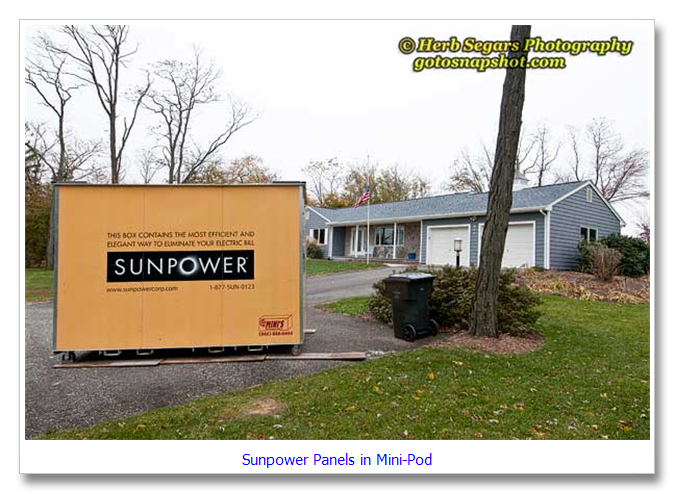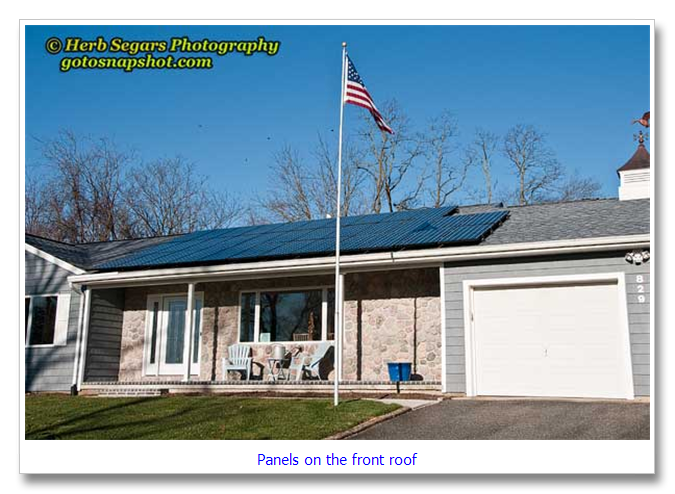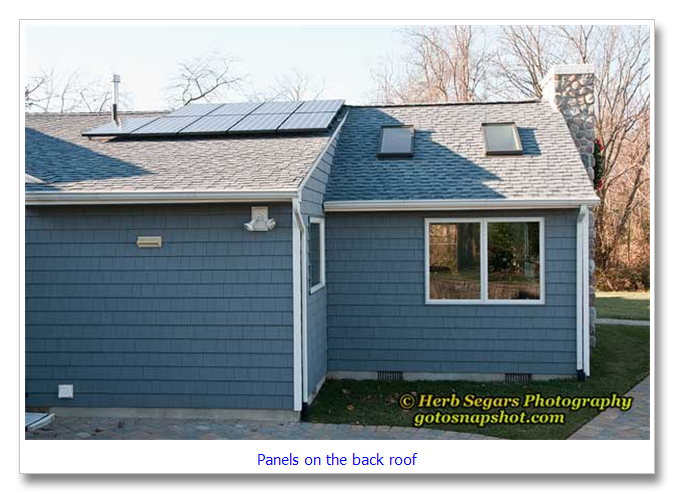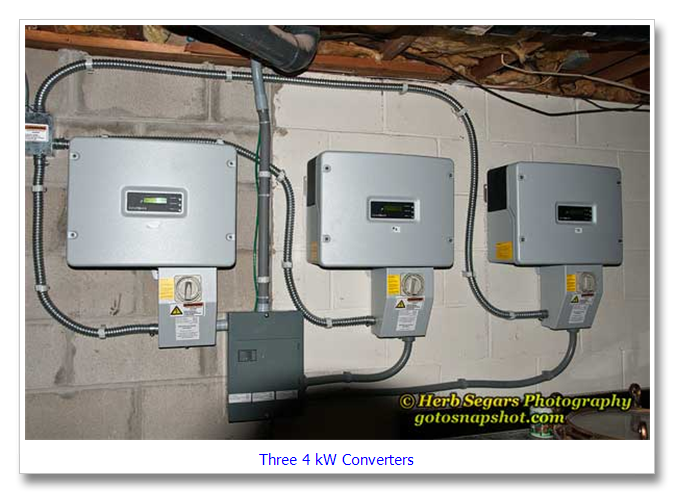My wife, Veronica and I have decided to add a solar electric system to our home. I thought that it would be interesting to write about the process in the hopes that it will provide information to others interested in it. A few years ago, we had reached a point where we had to make a big decision about our house. We were in need of new windows and doors, a new roof and siding. Our backyard borders the Brick Reservoir in Brick, New Jersey. We love where we live and we had contemplated an addition to the back of our house so we could take advantage of our backyard view. This was going to be a huge undertaking and we wondered if it was the right way to go. I am 62 years old and had hoped to be retired by now. All my plans changed when our son, Tom, suffered a traumatic brain injury in 2005. He worked for me and was going to take over the business so that I could retire. That is all out the window for now.
With Tom’s medical situation, we knew that we wouldn’t be leaving the area for some time to come if at all. We looked at two choices for our home – fix what needed fixing and sell our house and find a place that we would be happy with in retirement or do all the things that we wanted to in our present location and retire there. We love our location so much that the second option won out. We added on to the back of our house creating a great room and new kitchen area, replaced all our windows and doors and installed new siding and a new roof. We started our project during Christmas week in 2007 and wanted to be done in time for Tom and Lynda’s wedding at the end of May in 2008. We received our last inspection on the Tuesday before the wedding and on the day after the wedding, had more than 80 people at our home for a post wedding party.
Many of the decisions that we make are based on how they affect our retirement (when that time does come). My dive buddy, Beth Dalzell and her husband, Wes, installed a solar electric system at their home a few years ago and they were very happy with the system. Since they did theirs, the rebates offered for solar systems disappeared. Recently due to the economic stimulus programs, rebates returned and they are very good rebates. I did the math on installing solar and found for us it is a win-win situation.
The cost of the system is too high for a residential installation without rebates. The rebates made it much more affordable. The key for us was a payoff time less than 5 years. We would recoup our entire investment in that time period. I am not going to get into specific costs as they may vary depending on where you live and the size of the system. If you want specific info, send me an email and I will answer your questions.
Here are some things to keep in mind if you contemplate going solar. The roof where the panels are going to be installed should face in some southerly direction and it should not be shaded by surrounding trees. Our roof faces southwest at a 30° tilt. We have some tree issues and needed to remove a few. In our case, the trees were locust trees and we don’t like them because they tend to rot out from the inside and you don’t know that they are bad until they fall down. You should also plan on being in your home long enough to profit from the system. We have decided that this will be our last home. You have to be okay with the look of the panels on your roof. We visited a few other homes to look and see how they looked with the panels. We were okay with how our home would look. Some people will not like the look.
Next you have to find a company to supply and install the panels. With the current rebate system, these companies are pretty busy. After a lot of research, we settled on Seabright Solar. We met with their salesman, Keith Rose, and he went over our options. Before the meeting, I emailed him a copy of our electric usage for the year. That information is readily available from your electric company. He proposed a 9.9 kW-DC system. It is the largest residential system available. Their estimate was that our electric bill would be reduced by 89% with this system. Our electric cost for a 12 month period was $2,338.00. We should save $2,082.00 of that amount yearly. The system will help the environment by reducing 522,153 pounds of carbon dioxide emissions.
We then talked about the cost of the system. We were told about the current rebates. The State of New Jersey has a rebate of 23+% of the total cost of the system. There is also a 30% federal rebate on the cost of the system after the state rebate. That rebate is applied to your federal tax return. The real payoff in the system comes from Solar Renewable Energy Credits (SRECs) that we will receive each year. Our 9.9 kW system receives ten SRECs per year. These credits are sold back to the electric companies. The sale price per SREC that my friend, Wes, received in November of 2009 in New Jersey was $675. That provides a return of $6750.00 per year on SRECs. I am basing my system pay back on a $2,000 per year electric cost savings and $6750 for yearly SREC sales. My understanding is that we will receive SRECs for fifteen years although they may not be redeemable for that long of a time. There is also no guarantee that the price of the rebates will remain at its current level.
We signed up for our system on May 1, 2009. Seabright Solar submitted the rebate forms to the state and we received our letter of approval for the rebate at the beginning of June, 2009. We have a year to complete installation of our system to get the rebate. This rebate is paid directly to the solar company by the state. Next, permit applications were submitted to the town. Our first minor glitch came when the town wanted assurance that our roof could support the solar panels. Seabright Solar sent someone over to take measurements and they supplied the info to the town. Once past that, Seabright Solar was notified by the town that they would need to submit a zoning application which they took care of. After a few weeks waiting for approval, they were notified that the town needed a survey to complete the application. Fortunately, we had one from our addition work and that has now been submitted and we are waiting for the permit approval.
In order to get the full rebate from the state, we had to undergo an energy audit of our house. Seabright Solar set this up and when I was contacted by the energy audit contractor, I was told that the audit would take about five hours. When my friends had theirs done, it took an hour. I couldn’t imagine how the audit could drag on for five hours. Well, the audit actually took six hours and I was really impressed. They checked all the gas pipes in our home for leaks, checked the insulation in the attic, basement and crawl space. Closed off the front door and installed a fan that sucked air out of the house and they went around looking for leaks. They found a few good size leaks in the basement that pulled air through inside walls of the house from the attic to the basement. I was even more impressed when they fixed the problems and I didn’t have to pay a cent. The cost of the audit is paid by the state. I was really surprised when they found a couple of leaks in our new addition. They weren’t large but they were there and the contractor caulked them up. I am not sure how much work they are able to do under the contract but what they did at our house was pretty minor. In the end, our house passed the audit.
Now we wait for the permit from the town and the installation of our system. We will have forty-three 230 watt SUNPOWER panels. Each one is around 2.5’ x 5’. They will be connected to three 4.0 kW inverters.
Finally in late November, our panels arrived and installation began. They came to our house in a mini-pod. It was positioned in our yard so that everyone could see the SUNPOWER name.

Installation took three days and Veronica and I were very impressed with the installation and the installation crew. The first thing that they did was get into our attic and reinforce the roof beams that had the panel supports attached. I was wondering why this was necessary as the panels are very light. Nick, the foreman of the crew, explained that the reinforcement was not for the weight but for the wind load underneath the panel wanting to bow the roof. All their wiring ran through conduit and they cleaned up after themselves. They arrived at our house when they said they would and that is an exception in this day and age.

Because of the trees in our yard, the panels were put on the front roof of the house and also on a roof in the back that faced south. The original installation required two 5 kW inverters but having the panels on two roofs necessitated three 4 kW inverters. Seabright Solar did not charge any extra for the three inverter installation.

After the panel installation was complete, Chet, the electrician arrived to tie the system into the main electric panel. He was also neat and all his wiring ran through conduit. It took him about a day and a half to complete the wiring. The system works and a day after Chet left, Veronica and I stood on the side of our house and watched our electric meter run backwards. December is not one of the better months in New Jersey for solar but I estimate that we should cut our electric bill in half this month. I can’t wait until the really good months of April, May and June.

It is interesting to watch how the converters work. Every morning when it starts to get light out, you can see the three lights on each inverter start to blink. Once the panels start getting light on them, a single green light remains on and they stay this way until they lose the light and the inverters shut down.
We had a very pleasant experience with Seabright Solar. I did find that I had to stay on top of things more with the office than I did with the installation crew. With the current rebate systems in place, Seabright Solar, like other solar installers are very busy so things in the office can get pretty hectic. I don’t think that you will be sorry if you choose to use them.
© 2009 – 2010, Herb Segars. All rights reserved.

